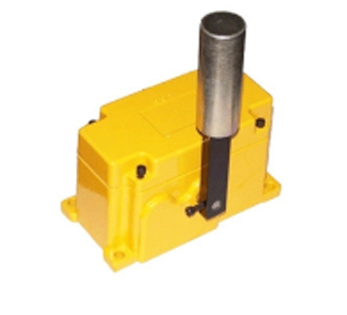
The DYPK-12-30 deviation switch is a high-performance conveyor belt monitoring device designed to detect the deviation of the conveyor belt in real time. This device can quickly issue an alarm signal when detecting that the conveyor belt deviates from the normal track, and can control the system to perform shutdown operations to prevent equipment damage and production accidents. DYPK-12-30 is widely used in industrial fields such as mining, metallurgy, power, and chemical engineering, and is an important equipment to ensure the safe operation of transmission systems.
High sensitivity detectionDYPK-12-30 is equipped with high-precision detection sensors that can monitor slight deviations of the conveyor belt in real time, ensuring timely response and preventing accidents from occurring.
durableThe equipment casing is made of high-strength materials, which have excellent impact resistance and wear resistance, and are suitable for various harsh industrial environments.
Wide range of motion anglesDYPK-12-30 supports a detection angle range of 0 ° to 30 °, which can adapt to the needs of various conveyor belt systems and provide flexible monitoring solutions.
Simple installation and maintenanceThe device design is compact, the installation process is simple, the maintenance workload is small, and it can be quickly integrated into existing systems, reducing operating costs.
High protection levelThe protection level is IP65, ensuring that the equipment has good dustproof and waterproof performance, and can work stably in various harsh environments.
Installation locationIt is recommended to install the deviation switch DYPK-12-30 at locations where the conveyor belt may deviate, such as the head and tail rollers or other critical areas, to ensure the effectiveness of the detection.
Debugging and SettingAfter installation, adjust the detection angle according to the operation of the conveyor belt to ensure that the equipment can accurately trigger the alarm signal when the conveyor belt deviates.
Daily maintenanceRegularly inspect the mechanical and electrical parts of the equipment, clean the dust and debris on the surface of the equipment to maintain its normal operation. It is recommended to regularly test the sensitivity of the equipment to ensure that it can accurately detect deviation during actual operation.
The deviation switch DYPK-12-30 is suitable for the following scenarios:
The DYPK-12-30 deviation switch provides reliable safety assurance for industrial conveying systems due to its high sensitivity, durability, and high protection level. By timely detection and alarm, equipment failures and production accidents caused by conveyor belt deviation can be effectively prevented, ensuring the smooth operation of the production line.
1. How to adjust the detection angle of the deviation switch DYPK-12-30?
The detection angle range of the deviation switch DYPK-12-30 is from 0 ° to 30 °. During the installation process, you can adjust the installation position or angle setting of the device to meet actual needs. Ensure that the switch can accurately trigger the alarm signal when the conveyor belt deviates. When adjusting, it is necessary to ensure stable installation of the equipment to avoid affecting the detection effect due to changes in position.
2. What industrial environments is the DYPK-12-30 deviation switch suitable for?
The deviation switch DYPK-12-30 is suitable for industrial environments such as mining, metallurgy, power, and chemical engineering. Due to its protection level of IP65, it can effectively resist the invasion of dust and water, making it particularly suitable for use in harsh environments such as high temperature, high humidity, and high dust working conditions.
3. How to maintain the deviation switch DYPK-12-30 to ensure its long-term stable operation?
To ensure the long-term stable operation of the deviation switch DYPK-12-30, it is recommended to regularly inspect the mechanical and electrical parts of the equipment to ensure that there is no looseness or damage. Regularly clean the dust and debris on the surface of the equipment to maintain its normal operation. In addition, it is recommended to conduct regular functional tests to ensure that the equipment can accurately trigger alarms and perform corresponding shutdown operations when the conveyor belt deviates.